Vintage resonators, budget rarities and seaweed-hued semi-hollows: inside Peter Green’s guitar collection
With over 100 of his guitars coming up for auction, we examine some gems from the Fleetwood Mac founder’s personal collection – some of which are surprisingly affordable

When the guitar collection of a legendary guitarist goes on sale, it’s normally dominated by guitars that garner record sums. From electric guitars that were used on platinum-selling albums to vintage unobtainium, such auctions are generally composed of instruments that average guitarists can only dream of – partly because of their provenance and partly because rockstars tend to own vertiginously high-end equipment.
The late Peter Green’s guitar collection is a more interesting proposition, however. Though it contains many highly sought-after instruments, it also reflects the tastes of a man who maintained a broad and unpretentious interest in guitars throughout his life.
Some were played daily, while others were bought seemingly on a whim to form a collection of well over 100 instruments that includes many rare vintage guitars but also workaday modern instruments, from Strat clones to seaweed-hued semis. Turkish lutes and bulky archtops sit cheek by jowl with high-end British acoustics and chainstore electrics – a huge spectrum of sounds to suit a broad and enquiring musical mind.
Now, three years after Peter’s passing, his guitar collection is coming up for sale at prestigious London auction house Bonhams, along with some of Peter’s self-penned artworks and Fleetwood Mac grails such as the original hand-written lyrics to Man of the World. The auction, which will be online only, will take place from 16 to 28 June. But with so many guitars going under the hammer, it’s clear someone must have had a heck of a job authenticating, cataloguing and prepping everything in time for the sale.
That someone is Steve Clarke, a veteran guitar tech and restoration expert who is also the author of the Famous Frets book, which forensically traces the history of some of rock’s most iconic guitars. Today, Steve is Bonhams’ go-to man for high-profile guitar sales of this kind and he was happy to tell us a little more about the many interesting instruments that ended up on his workbench while he was preparing Peter Green’s guitars for auction.
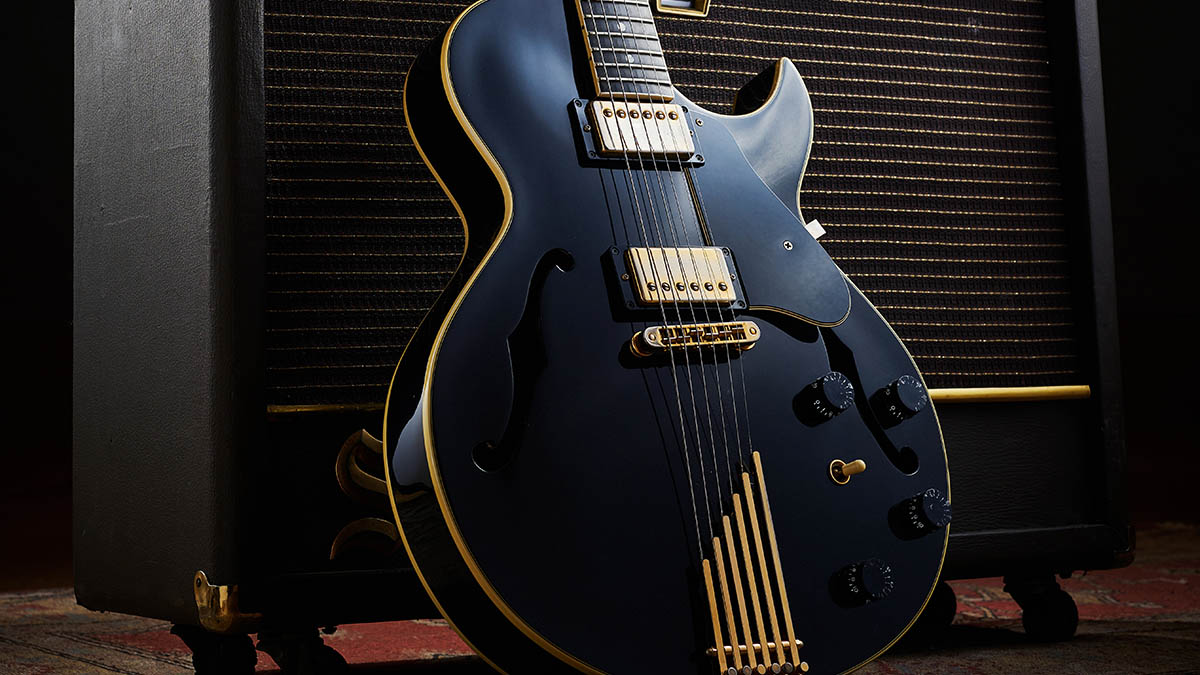
One of the most exciting is the 1931 National Duolian that Peter was photographed with around the time of his 1997 Peter Green Splinter Group album. Imbued with shovelfuls of mojo and evidently played hard for decades, the guitar embodies so much blues history, not least Peter’s own contributions. So what did Steve think of what must surely be the centrepiece guitar of the sale?
“It’s bloody loud!” Steve laughs. “You strum a chord and it’s a shock, to be honest with you. I’ve played these before, but I didn’t know where the sound was coming from – and that’s with old strings. And it was loud. Someone next to me said, ‘Have you plugged that in?’ I said, ‘I was just going to ask you that! Where’s this volume coming from?’ It doesn’t sound real. It’s quite heavy, though – it surprised me – and it’s got a very wide fingerboard on it.”
Get The Pick Newsletter
All the latest guitar news, interviews, lessons, reviews, deals and more, direct to your inbox!
Like so many National guitars, wear-marks have only increased its charisma, while the familiar Pacific-island scenes on the back of the body still beguile the eye.
“It’s beautiful,” Steve agrees. “It’s got nice engraving – I think it’s one with the palm trees on the back. So it’s a lovely, lovely thing.”
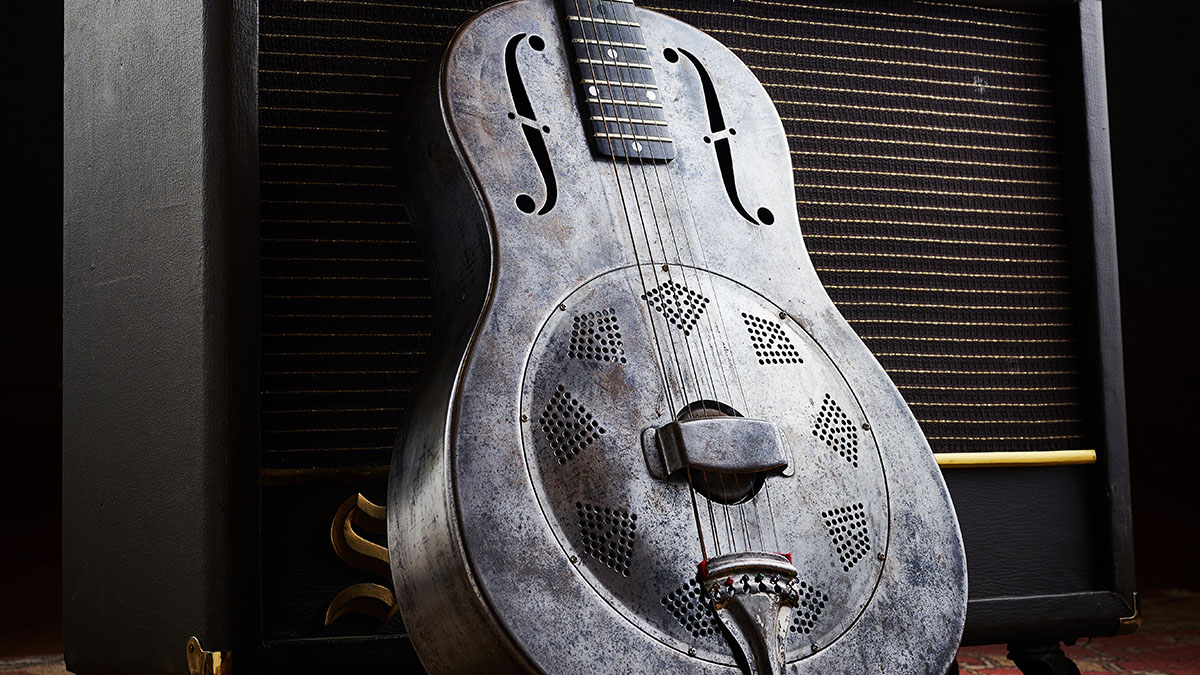
However, beneath the evocative looks, there was still a guitar that Steve needed to set up and perform cautious, sympathetic maintenance on before it could be presented for sale.
“It was a little bit untidy,” he recalls. “I slacked the strings off – which had to be kept on – because the fingerboard was so dry. The frets were also a little bit bronzed-over due to storage. So I oiled the fingerboard and cleaned all the frets with these fret rubbers, which you probably know about – they come in three gauges – and got a really nice shine on them.
The main thing I’d say on all of the guitars in his collection, which really surprised me, was how high the action was
“The fingerboard looked fantastic when I’d done it. I then put the strings back on and just carefully tuned it up, because they were quite old strings, and I’d gotten rid of that scratchiness. You know that feeling you get when a guitar’s not been played for a while? But after that it was great. It’s just a wonderful guitar, impressive,” he says, adding that the way he found Peter’s guitars set up shone an interesting light on his preferences as a player.
“The main thing I’d say on all of the guitars in his collection, which really surprised me, was how high the action was,” Steve continues.
“They were all very high action. He obviously wanted to dig in. Where he did seem to have had setup work done was in the nut area: the nuts of some of his guitars were cut to [give a relatively low action] around those first three frets. But higher up the fretboard, he didn’t want a low action. There was a Gibson Firebird I looked at and an Epiphone Explorer that, again, both had really high actions.”
Careful with that axe
Some guitars in the collection needed more than just a bit of light fettling, meaning Steve had to tread carefully to keep the guitar as close to its original condition while ensuring it worked and played properly before entering the auction catalogue. Such was the case with the beautiful 1968 Gretsch White Falcon that is another standout instrument in the sale.
“It was in a poor state, that one,” Steve admits. “It was probably one of the worst ones out of the six that we needed for the Birmingham Guitar Show [where the auction was showcased to admiring guitar fans in February of this year]. When I plugged in the Gretsch nothing happened… Nothing! Completely dead. I thought, ‘Here we go…’ And time was so precious, I can’t tell you. It was just bonkers. So I said, ‘What do you want done?’ And they said, ‘Steve, we need those six guitars and they’ve got to be working.’ So I said, ‘Right, I’m gonna need to spend some time on it…’
“I basically started messing about. I checked the jack socket and it had completely bronzed over – there was nothing going on there. Cleaned all that up, went through all the switching. One of the toggle switches, I recall, had turned around [in its mounting] and it was shorting out. So I took that out and checked it, undid the knot on the wires, and ‘Brang!’ a bit of life came back into it. And then it was a matter of cleaning the pots, which were terribly scratchy and intermittent.
“I spent quite a while on that one guitar and Bonhams are staring at me like, ‘You do know there’s about 150 other guitars [to set up] and we’ve got two days, don’t you?’ [laughs] But I got it working and oiled the fingerboard and it was lovely. It was just such a nice guitar, just a wonderful piece of history and everything.”
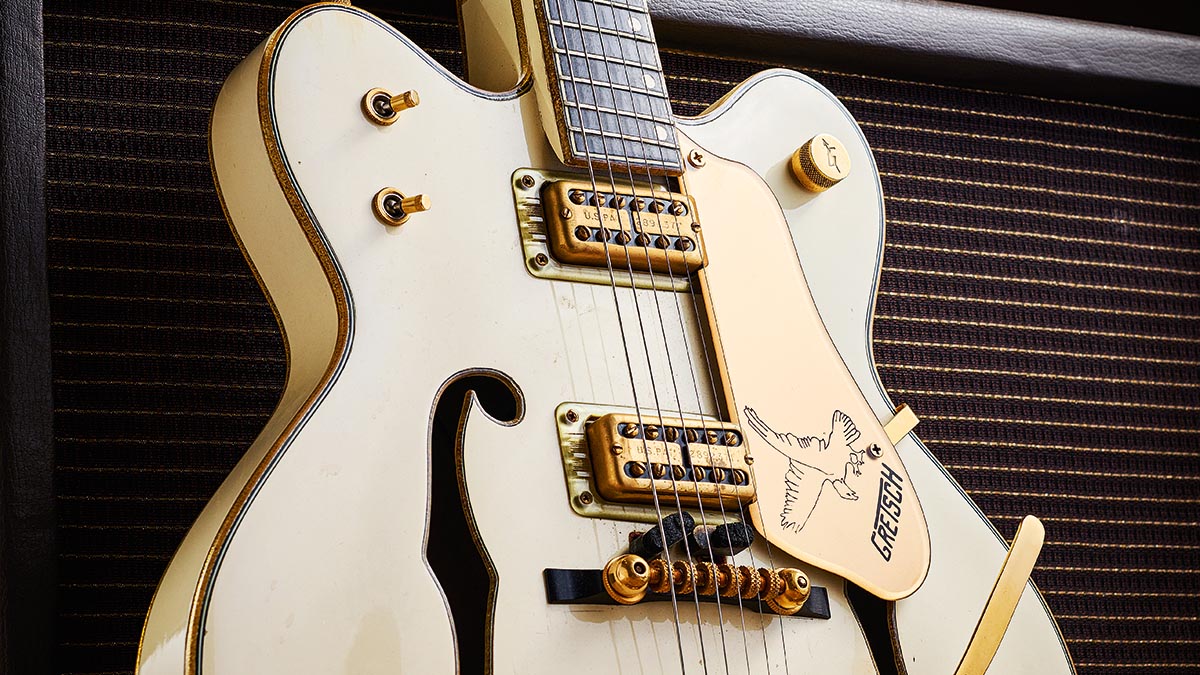
Unlike with normal maintenance jobs, however, Steve had to seek clearance before making any change to the original condition of the guitars he inspected, no matter how routine.
“Sometimes we’d have to phone the estate if I was just taking strings off,” he explains. “If a string was found to be broken when we inspected a guitar, it had to go back in case after it was replaced. Whereas you or I would probably just chuck it in the bin.”
One notable feature of the collection is the number of rarely seen models by major US makers. Peter clearly had an eye for uncommon guitars, such as an early ’70s ES-325 with mini-humbuckers, which looks like the lovechild of a 335 and an Epiphone Riviera, with a dash of ’70s SG thrown in for good measure.
“They’re unusual,” Steve agreed. “From memory, I think that was a 1972 model. It had the embossed [pickup] covers on it, which I think nails it to around ’72. And I remember now the bridge pickup surround was busted, so what had happened is that the adjustment screw on the bass side was tilting and going into the guitar body.
“But yeah, it was a ’72 with the Epiphone-type pickups on it. It was a lovely thing, though. I got that working, too. It also had a fault on the volume pot for the bridge pickup, which didn’t surprise me, it’d probably been like that for a bit. But yes, got it working again – nice guitar and you’ll not see many of those.”
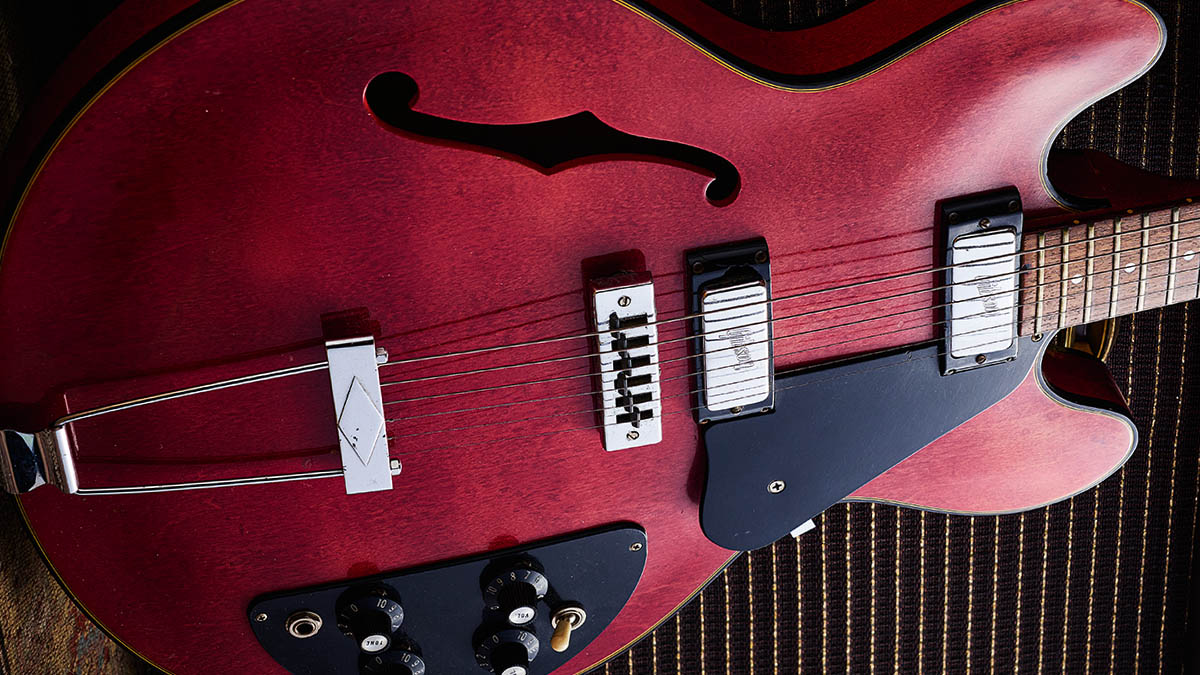
The colour & the shape
But, arguably, what makes this auction a little different to others of its kind is the number of inexpensive but serviceable guitars that offer Peter Green fans a very realistic chance to bid on something he owned and enjoyed.
“He had Encore Strat-style guitars, you know, and Stagg stuff,” Steve explains. “And some of these things he’d got, I think, perhaps just because he liked the colour. I remember one that was a green Tanglewood, with a 335-type shape. I think the story was he bought it in Scandinavia. There’s a piece of paper inside: ‘Bought this in Sweden,’ I think it said, and the weird thing is, he bought it because it ‘reminded him of seaweed’.”
“That also seems to be the case with things like his four-string Turkish lute,” Steve continues. “According to people who were close to him, he sometimes bought things if he simply liked the look of them. He didn’t necessarily play them all. And there were many guitars that clearly he hadn’t played. A lot of the Strats, he played, though – I could tell he played them [regularly]. He also had a nice Telecaster-style electric, a blue one made by Steve Acworth.”
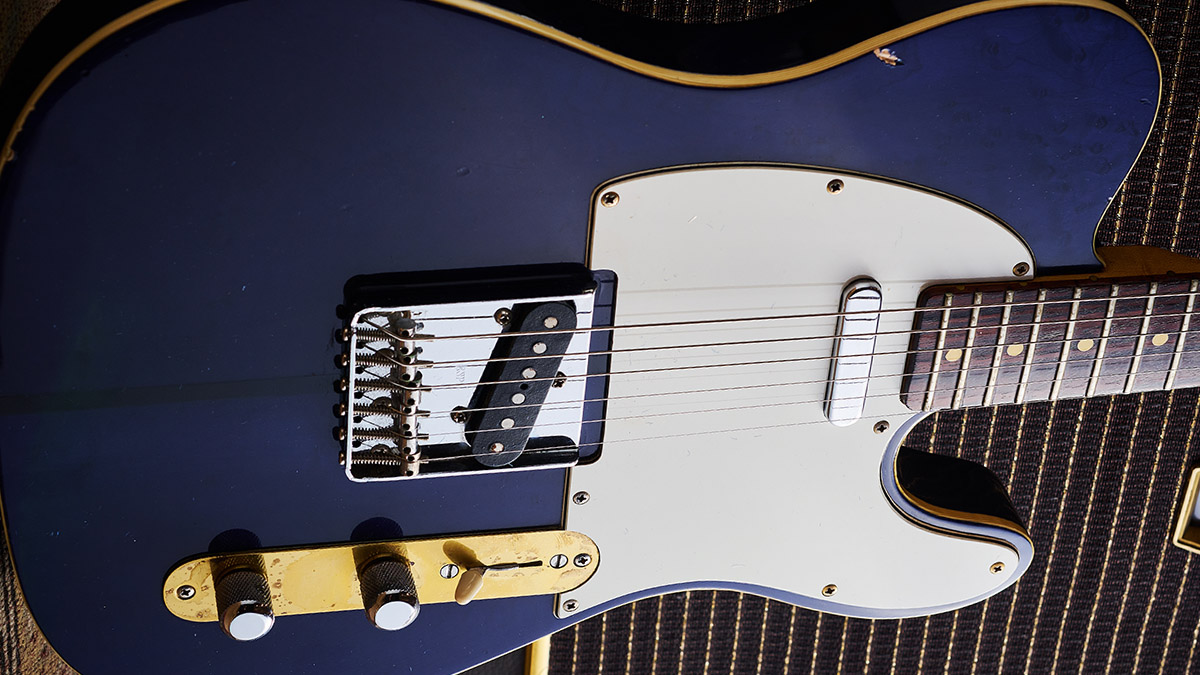
Indeed, that particular guitar (pictured above) immediately stood out to us as well. Made by the late British luthier Steve Acworth, who died in 2017, the guitar closely resembles Leo’s finest with a few departures from tradition including a zero fret. Somehow the carefully hand-built nature of the guitar speaks to you straight out of the case, Steve agrees.
“Straight away it felt quality,” he says. “It had a good weight to it and it was a really comfortable guitar, really nicely balanced and the fingerboard was excellent. And from memory, it had the lowest action of all the guitars I picked up. It was like it was somebody else’s [other than Peter’s], if you know what I mean?
“It has a very low action on it, very playable and it didn’t choke out anywhere; the nut was cut perfectly on it. Beautiful guitar, really, really nice colour. I loved it, absolutely loved it,” Steve enthuses and we can only agree. In fact, the Acworth T-style electric would be the guitar we’d be most tempted to take a punt on were we bidding in June.

Some of the most exciting lots in the auction, from a musical perspective, aren’t instruments at all, however. Steve says that among the guitars were numerous vinyl records as well as sketches and artworks plus, most interestingly of all, hand-written lyrics to seminal Fleetwood Mac songs.
“There were boxes with albums in, you know, like K-Tel greatest hits and Fleetwood Mac albums and things,” Steve says. “There was a whole range of very strange stuff and classical stuff. Then in one of the boxes there were some very abstract-looking paintings and a crumpled up [sheet of] paper. Someone told me that those were the lyrics to Man of the World, which are now estimated to be worth around £80,000.”
But it’s the guitars, of course, that are most likely to capture the attention of readers of Guitarist. Eclectic, interesting, surprising yet at times quite humble, Peter Green’s collection is more than just a group of instruments, it’s also a window on the mind and musical life of an enigmatic artist.
“Think about guys like Hank Marvin – you could give him a Strat copy from Argos for £100 and he’d still sound like Hank Marvin, you know what I mean?” Steve Clarke reflects. “And I think that’s the same with Peter Green: he must have known that if he could pick a guitar up and play it and everything else felt good for him, and if he liked the look of it, he was happy – never mind if it’s 50 quid or five grand.”
- For more information on the auction, head over to Bonhams. To learn more about Steve Clarke’s wider work, see Famous Frets.
Jamie Dickson is Editor-in-Chief of Guitarist magazine, Britain's best-selling and longest-running monthly for guitar players. He started his career at the Daily Telegraph in London, where his first assignment was interviewing blue-eyed soul legend Robert Palmer, going on to become a full-time author on music, writing for benchmark references such as 1001 Albums You Must Hear Before You Die and Dorling Kindersley's How To Play Guitar Step By Step. He joined Guitarist in 2011 and since then it has been his privilege to interview everyone from B.B. King to St. Vincent for Guitarist's readers, while sharing insights into scores of historic guitars, from Rory Gallagher's '61 Strat to the first Martin D-28 ever made.
“Finely tuned instruments with effortless playability and one of the best vibratos there is”: PRS Standard 24 Satin and S2 Standard 24 Satin review
Epiphone brings one of Gibson’s most desirable one-off finishes to the masses with Guitar Center-exclusive Widow Les Paul – but it’s been given a twist












